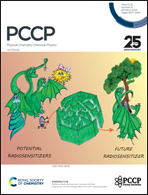Computational approach to enhance thermoelectric performance of Ag2Se by S and Te substitutions†
Abstract
Designing an n-type thermoelectric material with a high thermoelectric figure of merit at near room temperature is extremely challenging. Generally, pristine Ag2Se reveals unusually low thermal conductivity along with a high electrical conductivity and Seebeck coefficient, which leads to high thermoelectric performance (n-type) at room temperature. Herein, we report a pseudo-ternary phase (Ag2Se0.5Te0.25S0.25) that exhibits significantly high thermoelectric performance (zT ∼ 2.1) even at 400 K. First-principles calculation reveals that the Rashba type of spin-dependent band spitting, which originates due to sulfur and tellurium substitution, helps to improve the thermopower magnitude. We also show that the intrinsic carrier mobility is not only controlled by the carrier effective mass but is substantially limited by longitudinal acoustic and optical phonon modes, which is an extension of the deformation potential theory. Locally off-center sulfur atoms, together with the increase in configurational entropy via substitution of Te and S atoms in Ag2Se, lead to a drastic reduction in the lattice thermal conductivity (klat ∼ 0.34 W m−1 K−1 at 400 K). The Rashba effect coupled with the configurational entropy synergistically results in a high thermoelectric figure of merit in the n-type thermoelectric material working in the near-room-temperature regime.



 Please wait while we load your content...
Please wait while we load your content...